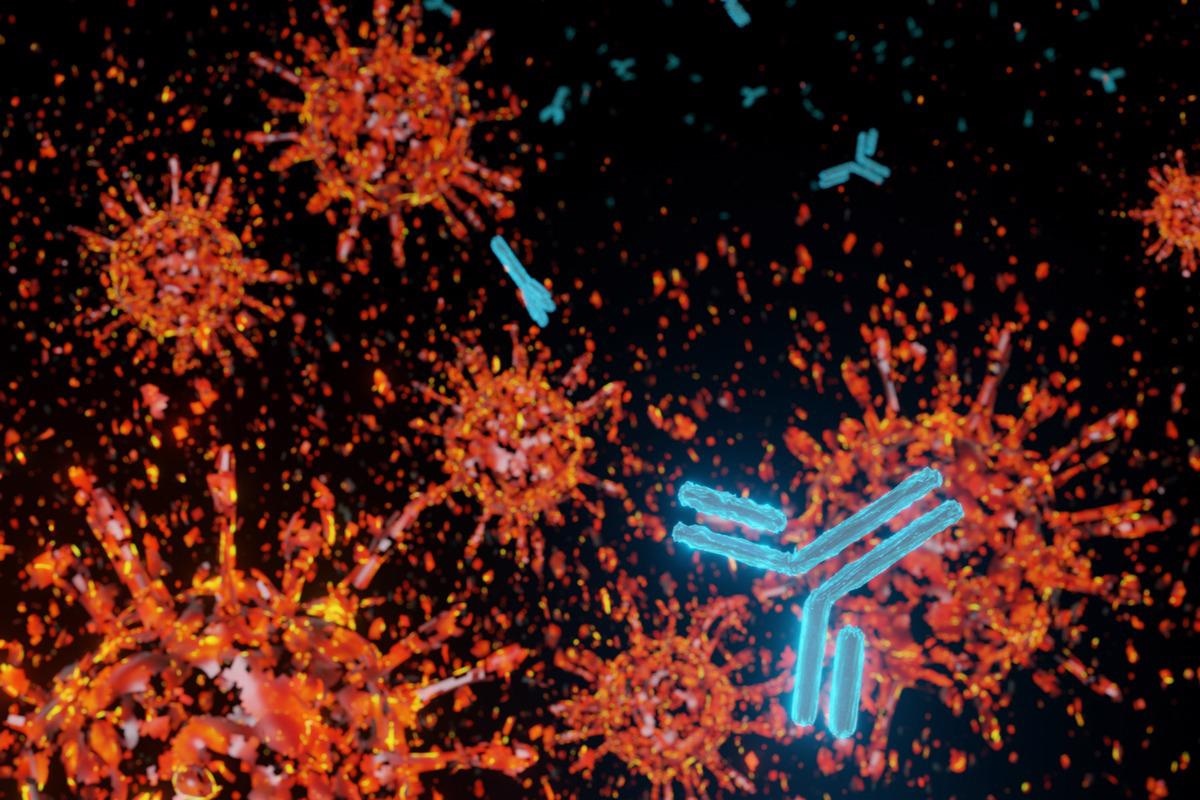Scientists have stated that the levels of neutralizing antibodies are strongly correlated with the prevention of symptomatic and severe coronavirus disease 2019 (COVID-19), caused by severe acute respiratory syndrome coronavirus-2 (SARS-CoV-2). Several products, such as convalescent plasma (CP), hyperimmune immunoglobulin (hIVIG), and SARS-CoV-2 neutralizing monoclonal antibodies (mAb), have been used in the passive administration of neutralizing antibodies for SARS-CoV-2.
 Study: Determinants of passive antibody effectiveness in SARS-CoV-2 infection. Image Credit: LuXiFeR Bowlo/Shutterstock
Study: Determinants of passive antibody effectiveness in SARS-CoV-2 infection. Image Credit: LuXiFeR Bowlo/Shutterstock

 *Important notice: medRxiv publishes preliminary scientific reports that are not peer-reviewed and, therefore, should not be regarded as conclusive, guide clinical practice/health-related behavior, or treated as established information.
*Important notice: medRxiv publishes preliminary scientific reports that are not peer-reviewed and, therefore, should not be regarded as conclusive, guide clinical practice/health-related behavior, or treated as established information.
Background
Among the passive antibodies, CP was relatively more available early in the pandemic. However, due to its limited availability, it was mainly used for treating severely infected COVID-19 patients who required hospitalization. The development of hIVIG requires a large amount of plasma is a more standardized product and contains a higher volume of antibody titer. This is why hIVIG are effective compared to CP. Many studies have shown that the SARS-CoV-2 neutralizing mAb is more potent and can be administered at a higher dosage.
However, one of the disadvantages of mAb is that it targets a single SARS-CoV-2 epitope, making it vulnerable to immune evasion by SARS-CoV-2 variants. All three passive antibody treatments have shown varying degrees of success.
The clinical trials associated with evaluating high-titer convalescent plasma revealed no improvement in mortality rate or condition of severely infected COVID-19 patients who required hospitalization and intensive care treatment. In contrast, treating ambulatory patients, with mild to moderate disease, with mAbs showed a significant reduction in COVID-19 related hospitalization. Scientists noted wide differences in antibody-based therapies for prevention and treatment of SARS-CoV-2 infection, regarding the administration of intervention, particularly, timing at which the passive antibodies treatments are administered, doses of antibody used, and outcome of the treatments.
A new study
A new study published on the medRxiv* preprint server has focussed on conducting a systematic search of the literature and aggregated data associated with randomized control trials of passive antibody therapy. This would help researchers explore how the timing and dose of administration of different types of passive antibody treatments help prevent or protect individuals from SARS-CoV-2 infection. In this study, researchers assessed the effectiveness of different doses of neutralizing antibodies, from pre-existing studies, by evaluating the mean serum neutralization titer of COVID-19 convalescent individuals.
Key findings
In this study, scientists determined the effective dose of neutralizing antibodies from screening different CP and mAb studies related to outpatient treatment. They found a strong correlation between higher efficacy and treatment at the early phase of the disease in both CP and mAb treatments. Importantly, the authors stated that a significantly lower dose of mAb than those typically used in many current treatment regimes could be effective to obtain maximum protection from symptomatic infection and hospitalization.
This signifies that a lower dose administration of mAb is valuable for COVID-19 treatment, thereby, a marked reduction in the cost of treatment could be achieved. These studies have also stated that higher doses of convalescent plasma could provide several benefits if administered to ambulant subjects. This strategy is more effective to treat patients infected with SARS-CoV-2 variants.
Researchers also highlighted that the timing of antibody administration is one of the key factors in determining the success of treatment. For instance, single antibody doses exhibited 92.4% protection from infection when given as prophylaxis, 73.5% protection to ambulant COVID-19 patients, and did not provide any protection in hospitalized patients.
One of the reasons for reduced effectiveness when administered at the advanced disease stage could be that the exact requirement is much higher at this stage than administered. This study revealed that the neutralizing antibody titer for 50% of the maximal protection could prevent the acquisition of infection as well as the progression of the disease from ambulant COVID-19 to hospitalization.
In addition, researchers pointed out a ‘ceiling’ of effectiveness for therapeutic treatment of COVID-19, where the maximum effectiveness was reduced at a particularly advanced stage. The ceiling effect of passive antibodies could be due to endogenous antibody responses.
Scientists revealed that the level of antibodies required to gain 90% protection against SARS-CoV-2 is around 0.90-fold of the mean convalescent titer. This implies that continual enhancement of endogenous antibody responses during infection may attain protective levels where further addition of passive antibodies would not provide any more protection. The authors stated that more studies are required to determine the optimal time for passive antibody treatment in COVID-19 symptomatic individuals.
Key limitations
The current study has several limitations that include the aggregation of studies that utilized different therapeutic approaches with different enrolment and outcome criteria. Another limitation is that it equated administered doses of convalescent plasma and monoclonal antibodies depending on a single study. Moreover, researchers considered the administered dose, while the majority of the studies failed to measure plasma neutralization titers in recipients after administration.

 *Important notice: medRxiv publishes preliminary scientific reports that are not peer-reviewed and, therefore, should not be regarded as conclusive, guide clinical practice/health-related behavior, or treated as established information.
*Important notice: medRxiv publishes preliminary scientific reports that are not peer-reviewed and, therefore, should not be regarded as conclusive, guide clinical practice/health-related behavior, or treated as established information.